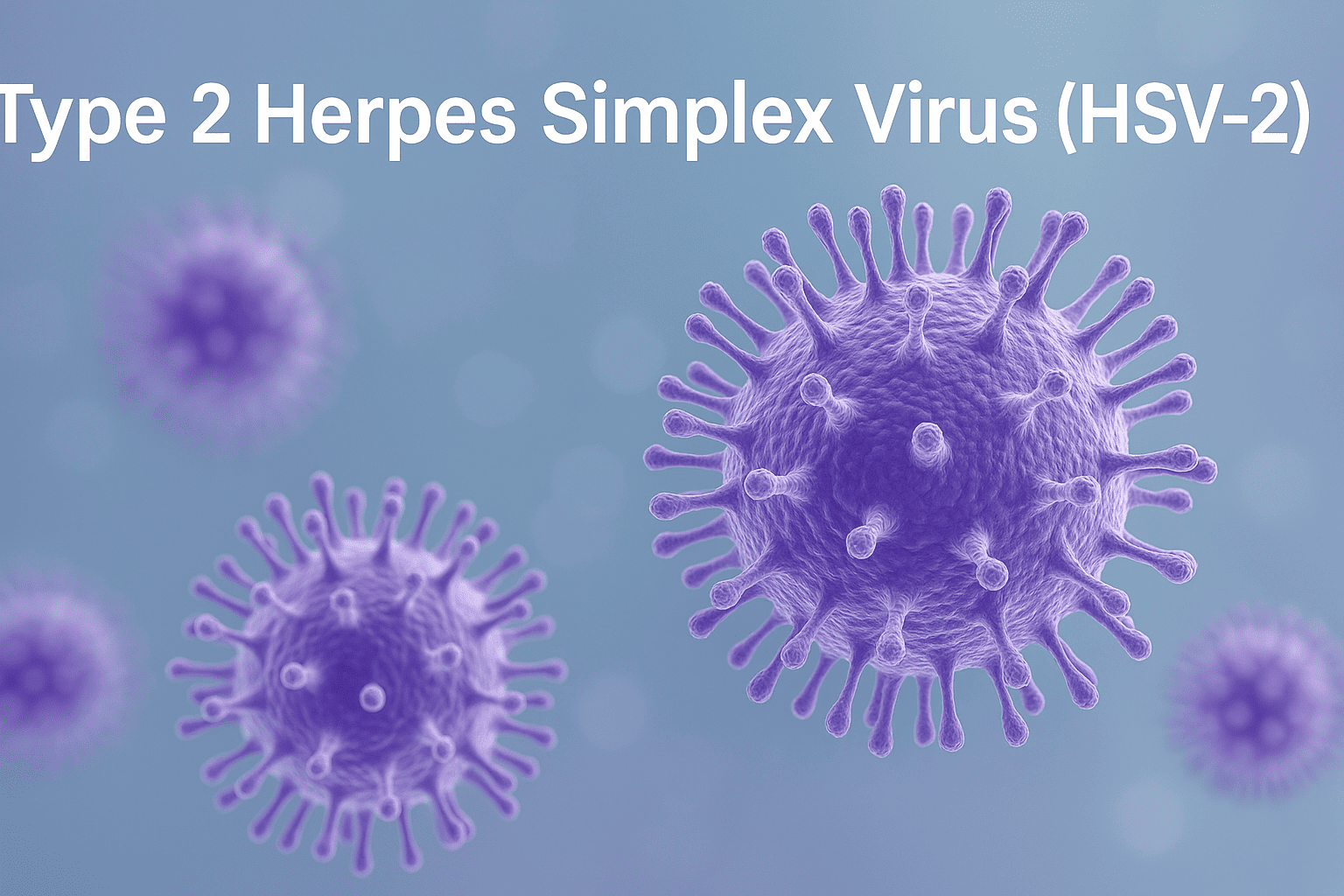Updated on: July 29, 2025
Herpes Simplex Virus Type 2 (HSV-2) is a lifelong, recurrent viral infection that primarily affects the genital and perianal regions. As a leading cause of sexually transmitted infections (STIs), HSV-2 can significantly impact physical, emotional, and reproductive health. The ICD-10 code A60.9 is used when genital herpes is diagnosed, but the specific site (e.g., vulva, penis, perianal area) is not documented or known.
This article helps providers understand the appropriate use of A60.9, how it differs from other herpes-related codes, and how to accurately document and treat HSV-2 cases.
When to Use ICD-10 Code A60.9
Use A60.9 when:
-
Herpes simplex virus is confirmed or clinically diagnosed
-
Lesions are located in the anogenital area
-
The exact site (e.g., cervix, penis, perianal) is not specified
-
The patient likely has HSV-2, but typing is pending or not performed
This is a default code for genital herpes infections when no additional location detail is provided.
Other Related ICD-10 Codes
| ICD-10 Code | Use Case |
|---|---|
| A60.0 | Herpesviral infection of vulva and vagina |
| A60.01 | Herpesviral infection of cervix uteri |
| A60.04 | Herpesviral infection of penis |
| A60.1 | Herpesviral infection of perianal skin/tissues |
| A60.9 | Unspecified anogenital herpes |
Clinical Features of HSV-2
-
Painful genital or anal vesicles/ulcers
-
Itching, tingling, or burning before outbreak
-
Dysuria, urethral discharge
-
Inguinal lymphadenopathy
-
Systemic symptoms (fever, malaise in primary episode)
-
Possible asymptomatic shedding
First outbreak is usually the most severe; subsequent recurrences are milder.
Diagnosis Workflow
| Test | Purpose |
|---|---|
| PCR swab of lesion | Gold standard for HSV-1 vs. HSV-2 typing |
| Viral culture | Less sensitive, may miss latent cases |
| Serologic testing (IgG, IgM) | Detects past or asymptomatic HSV infection |
| Tzanck smear (outdated) | Shows multinucleated giant cells; not type-specific |
SOAP Note Example – HSV-2 (A60.9)
-
S: “Patient reports painful genital blisters and burning during urination. Symptoms began 3 days ago. No prior episodes noted.”
-
O: 3 grouped vesicular lesions on labia majora, mild swelling, bilateral inguinal lymphadenopathy. No fever. HSV PCR swab collected.
-
A: Suspected HSV-2 genital infection – A60.9 (anogenital herpes, unspecified)
-
P: Start acyclovir 400 mg TID x 10 days. Educate on transmission, abstain from intercourse during outbreak. Follow up for test results and recurrence management.
Treatment of HSV-2
| Treatment | Medication & Dosage | Notes |
|---|---|---|
| Primary Episode | Acyclovir 400 mg TID x 7–10 days | Valacyclovir or famciclovir also options |
| Recurrent Outbreak | Acyclovir 400 mg TID x 5 days or 800 mg BID x 2 days | Shortens symptom duration |
| Suppressive Therapy | Acyclovir 400 mg BID or Valacyclovir 500–1000 mg daily | Reduces recurrences and viral shedding |
Counsel patients on adherence, hydration, and transmission risk even when asymptomatic.
Counseling Points for HSV-2
-
HSV-2 is chronic but manageable
-
Viral shedding can occur even without visible lesions
-
Use condoms to reduce transmission risk
-
Daily antiviral therapy can reduce recurrences and partner transmission
-
Partner notification and testing is recommended
-
Stress, illness, and immunosuppression may trigger outbreaks
Documentation Tips for A60.9
| Do’s | Don’ts |
|---|---|
| Confirm HSV clinically or via lab | Don’t use A60.9 for oral/facial herpes (B00 codes) |
| Note if this is a primary or recurrent infection | Don’t forget to document symptoms and location |
| Mention transmission counseling in patient education | Don’t use A60.9 if a more specific genital site is known |
| Update to A60.0x if site-specific diagnosis is later made |
FAQs
Can I use A60.9 if HSV typing is not available?
Yes. A60.9 is appropriate when genital herpes is diagnosed, but the HSV type (1 vs. 2) or lesion location is unspecified.
What if the patient is asymptomatic but seropositive for HSV-2?
Use Z21 for asymptomatic HIV or Z22.8 (carrier of other infectious diseases) if asymptomatic HSV status is being documented, or add Z11.3 if part of STI screening.
Can A60.9 be used for pregnant patients?
Yes, but consider also using O98.51x codes to denote herpes complicating pregnancy, depending on trimester and clinical relevance.
Related ICD-10 Codes
| Scenario | Code |
|---|---|
| Anogenital herpes, unspecified | A60.9 |
| Herpes of vulva/vagina | A60.0 |
| Herpes of cervix | A60.01 |
| Herpes of penis | A60.04 |
| Perianal herpes | A60.1 |
| Asymptomatic STD carrier | Z22.8 |
| STI screening encounter | Z11.3 |
| Counseling about STD | Z71.7 |
How DocScrib Helps Document HSV-2 Encounters
With DocScrib, clinicians can document STI visits—like HSV-2—in less time and with greater precision:
✅ Smart prompts for lesion location and HSV typing
✅ Auto-suggests A60.9 or more specific ICD-10 codes
✅ Inserts patient counseling documentation automatically
✅ Supports telehealth and in-person SOAP notes
✅ Helps you track recurrence and antiviral therapy adherence
🎯 Book your free DocScrib demo now to streamline STI documentation without missing any billing detail.
Conclusion
ICD-10 Code A60.9 is the go-to code for genital herpes (typically HSV-2) when no specific site is noted in the documentation. Use it with care, especially during the initial diagnosis, and revise it later if a more site-specific herpes code becomes appropriate.
With accurate coding and tools like DocScrib, clinicians can ensure high-quality STI documentation while keeping workflows fast, compliant, and patient-centered.
